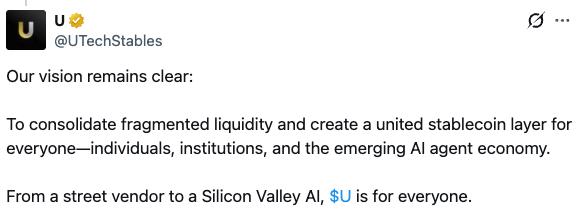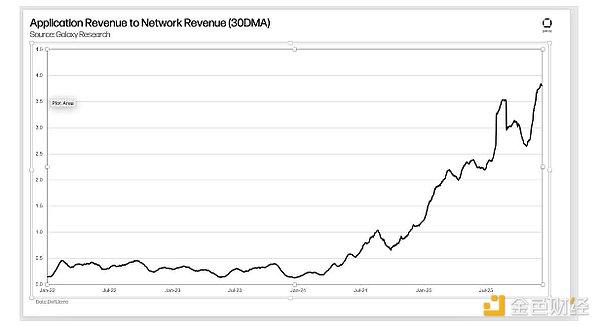Investors are worried about the recession and the continuation of the Bitcoin cycle , and are returning to the office to assess market conditions after the end of summer. August and September are not favorable for Bitcoin returns, but October may start a strong fourth quarter. ETF fund outflows and yield curve inversion have raised concerns about a recession. Bitcoin price cycles are questioned, the VIX index has soared, and the reliability of Sam's rule remains to be verified. The election may be a critical moment for the industry, and investors are cautious in holding coins. Affected by concerns, Altcoin may have hit a low.
Original title: A Weekly Digest of Bitcoin News & Insights
Original article by Greg Cipolaro
Original source: https://viewemail.nydig.com/
Compiled by: Mars Finance, Eason
Today's topic:
Market indicators show that investors are becoming more cautious in their positioning, indicating their forward-looking views on Bitcoin.
The situation of a large excess of sellers is basically over, and the long-awaited interest rate cut is now a foregone conclusion, but seasonality, recession concerns and concerns about the continuation of Bitcoin's cycle remain top concerns for investors.
There are few sector-specific catalysts in the near term, but the outcome of the U.S. presidential election could be the next big event.
Bitcoin market price
As summer comes to an end and most investors return to the office, we thought it would be valuable to assess the state of the Bitcoin market.
Seasonality
August has not been a great month for Bitcoin returns, but then again, that’s not usually the case. In August 2024, Bitcoin was down 9.8%. The average return in August is 0.1%, while the median return before 2024 (since 2011) was -8.5%. We’ve written about the impact of summer on Bitcoin many times in the past. This year seems to be no exception. Before this year, Bitcoin had only had a positive return of 38.5% in August.
Unfortunately, September’s returns weren’t much better, which means we could be in for a seasonal slump next month. Bitcoin lost an average of 5.9% in September, with a median return of -6.0%. Considering September has only just begun, this isn’t much comfort.
That being said, September is heading into October, which, you guessed it, will not only deliver some of the best monthly returns ever, but will also kick off a seasonally strong fourth quarter. Bitcoin won’t “magically go up” just because the calendar changes, but investors should keep an eye out for catalysts as we enter a seasonally strong period for Bitcoin returns.

Summer of Suspension
The surge in demand from ETFs launched in Q1 and Q2 has led to a reversal in the last few months, with a large number of sellers. Sales of seized Bitcoin resulting from bankruptcy resolutions and enforcement actions are two major categories of large sellers that have emerged in the past few months. Mt Gox, Silk Road coins held by the US government, German authorities (BKA), and Genesis are just some of the names of entities that have distributed or sold Bitcoin in the past few months.
However, the good news is that, with the exception of the U.S. government’s holdings of Bitcoin (about 203,000 BTC, or $12.1 billion), all of these large sellers have exited the market. The U.S. government’s actions are nearly unpredictable at this point (it doesn’t regularly disclose disposal plans, and when it does, it doesn’t stick to them), so investors will have to deal with a permanent overhang. That said, the price of Bitcoin has appreciated significantly over the years that the U.S. government has been holding Bitcoin, and while their occasional entry into the market will undoubtedly cause some short-term panic, this should not be a barrier to long-term price appreciation.
ETF outflows
Inflows into spot Bitcoin ETFs remained positive in the third quarter, exceeding $2.5 billion, but were uneven and sometimes negative. For example, outflows totaled $1 billion over the past seven trading days, which could weigh on prices. However, these outflows were not unfounded, as the stock market also sold off during this period.

Macroeconomic factors
All of this news comes as investors prepare for the first rate cut by the FOMC since March 2020, when the Covid-19 healthcare and economic crisis led the FOMC to lower the federal funds target rate to 0.0% – 0.25%. While a rate cut is all but certain given falling inflation data, the market is pricing in a 25bp cut on September 18th at 100%, and a 50bp cut at about 30%.
However, offsetting this are concerns about a slowing US economy and the prospect of a recession. While August was a good month for stock indices, there was some extreme volatility in trading. The VIX, a measure of market volatility, briefly jumped above 65, a level only reached twice before, during the COVID-19 pandemic and during the 2008 global financial crisis. The “Sam’s Rule” was triggered by the July jobs report (released on August 2nd), a recession leading indicator that everyone seems to be talking about lately despite being invented in 2019 (hey, we just found out about it at the last Fed press conference). Not since MMT (Modern Monetary Theory) have we seen an economic concept gain public attention so quickly. We’ll see if this concept sticks around or if it’s quickly overturned like MMT. The yield curve (10-year – 3-month) has been inverted for nearly 2 years as a recession indicator, which calls into question the reliability (timeliness) of these indicators. One thing is certain, the US will eventually go into recession. But predicting when this will happen remains an open question.
cycle
As Bitcoin’s range-bound trading gradually turns to high volume, experts are increasingly questioning how long this price cycle will last, or if the 4-year cycle will continue. While only time will answer both questions, we think comparing Bitcoin’s current cycle (from trough to potential peak) to previous cycles may give us an idea of where we are. As shown in the chart below, despite recent price action, the current cycle is essentially at the same level as the previous two cycles. There has been a huge “front shift” in this cycle due to the launch and demand for spot Bitcoin ETFs, which had no analogue in previous cycles. Given this, it is not surprising to see that we are currently in the same position as other cycles. One big difference is that at this time in other cycles, other narratives outside of Bitcoin began to emerge, which has not really happened in this cycle. Without the emergence of new narratives, the final speculative phase of the crypto cycle may never occur. If Bitcoin fails to make new highs in this cycle other than the March high (which was only slightly higher than the previous cycle high), we may have to revisit the cycle theory.

Trader Positioning
Looking back at recent events, understanding traders’ positions is an important factor in understanding where Bitcoin is headed next. Market-based indicators show that traders are becoming increasingly cautious about their forward-looking view on Bitcoin.
Financing Rate
The funding rate for perpetual swap contracts has risen sharply, and at times has even turned negative. This suggests that demand for leveraged long trades has fallen, and at times traders are looking to go net short(when funding rates are negative). It is not surprising that traders are becoming more cautious compared to the indicator being near all-time highs.

Futures Basis
As Bitcoin prices have languished, benchmarks for offshore and onshore futures have emerged. The futures premium is another measure of traders’ positions, as futures are another way to leverage Bitcoin. With this metric in place, it tells us that investors have little interest in long-term directional exposure to Bitcoin prices.

Put/Call Ratio
Deribit's put/call ratio (the ratio of open put contracts to call contracts) jumped in early September, indicating an increased appetite to hedge against downside price action. However, the ratio has been declining throughout August and remains well below March highs. We believe current levels are well within historical ranges, but the recent jump suggests that traders are showing a gradual caution.

catalyst
Unfortunately, there are very few potential near-term catalysts for Bitcoin right now. Most catalysts are related to macroeconomic data (inflation, unemployment, GDP growth) or monetary decisions (FOMC rate decisions), and very few are specific to cryptocurrencies or Bitcoin. Of course, the U.S. presidential election will take place in November, and Donald Trump will continue to make his mark as a crypto-friendly candidate. Kamala Harris' stance on Bitcoin or cryptocurrencies is not widely known or clearly outlined, but she is not considered by the public to be as supportive of cryptocurrencies as Trump. It is impossible to guess which candidate will win the election, but November could be a pivotal moment for the industry. Until then, however, Bitcoin will likely be affected by the broader market backdrop.
Market Dynamics

Bitcoin fell 5.4% this week as investors began to sell risk assets after returning from summer vacation. Stocks also fell sharply, with the S&P 500 falling 1.6% and the Nasdaq Composite falling 2.2%. Economically sensitive oil fell 8.9% this week. We believe that as bonds rose amid the decline in risk assets, concerns about an impending recession seemed to outweigh the prospect of a long-awaited rate cut.
Most of our market analysis has been covered in previous sections, but here's one last interesting observation. Altcoin(except ETH) appear to be trading near lows/support levels hit earlier this year. This may indicate that some of the speculative excesses in the market have been squeezed out. If Bitcoin can't hold, Altcoin are unlikely to hold either, but perhaps if some of the fears fade, traders could get caught offside.








